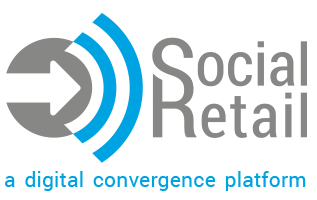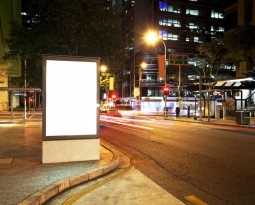Digital signage can offer amazing returns on investment, which can include up to a 30% lift in sales and a 56% increase in brand awareness. However, these benefits can only come from a system that has been well-implemented and works within the corporate culture of the buyer.
Retailers and QSRs unfortunately do not always consider the full range of factors that go into an effective digital signage campaign. They either rush into the purchase decisions, employ haphazard training or fail in their design approach. Any of these blunders could turn an incredible opportunity into a time and money sink.
Luckily, most of the setbacks can be prevented or corrected rather easily. To help your brand avoid any mishaps with their digital signage campaign, here are the things that many others have gotten wrong:
Falling for Glossy Hardware
Too often, a brand dives headfirst into purchasing digital signs without fully weighing their options or prepping their staff for the change. Not all types of signs will work with every business. Instead of looking for screens with the thinnest profile or the brightest lumens, brands should first examine what makes the signs tick.
For one, the content management and control software must be easy to use and compatible with current practices. Too many brands end up “locked in” to one type of software that can be quite frustrating, buggy or awkward to operate within existing systems.
Another common problem comes from lack of support. Having a row of frozen signs displayed to customers while someone sits on the phone for over an hour trying to reach tech support can damage your brand and eat up labor costs.
Even installation can become a problem if the final display does not fit within the needs of the campaign. For these reasons, the slickest-looking product should not trump flexible software management options and accessible, useful tech support when needed. Always test products and research reputation before jumping into a purchase.
Not Setting Goals
Digital signs are a tool. Like any tool, they must be used properly to have the desired effect. Brands should set strict, specific goals when purchasing and setting up digital signage. KPIs can include sales lift, increased brand awareness, increased foot traffic or anything else considered relevant.
These KPIs will dictate factors like how you intend to reach your audience, display placement and the type of content used. When decisions are made with these specific factors in mind, the performance of the signs can be evaluated and adjustments made accordingly.
Not Using the Medium Properly
Digital signs are a relatively new advertising medium. They are definitely not posters, but they are not video players or interactive kiosks either. While this fact is obvious, many brands make the mistake of downplaying the unique advantages digital signs offer. Examples of missteps include:
- Too much text
- Bland color schemes or fonts
- Conflicting messages or too “busy” of imagery
- Wrong content for audience
- Too much motion
- Not using motion or dynamic nature of signage
- No hierarchy between images, copy or overall ideas, leaving audience confused or only getting half of the message
In general, the design of digital signage content should be somewhat of a cross between billboards, display ads and a comic book panel. Viewers only have a few moments to perceive the message before the screen transitions to a new slide. Their eyes should fall naturally on the first aspect they need to be focusing on with all of the subordinate elements being absorbed next.
Big ideas can be spread between multiple slides, but not every viewer will see the complete set or see the slides in order. Design becomes a delicate balance between adding enough visual interest and becoming too “busy” or “noisy” to be effective.
Conclusion
Overall, digital signs are a great way to reach your market as long as they are used properly. The best way to maximize their effectiveness is to set periodic goals and make adjustments based on the resulting data
Signs can also increase their effectiveness when used alongside other branded messages, such as those seen on social media, and even the new Beacon technology devices and software. A convenient signage management software suite that can also manage beacon notifications for campaign consistent messaging, and social media will help increase return on investment and consistency of brand message. Digital Social Retail’s platform works in exactly this way to simplify digital marketing campaigns and control every aspect of the customer journey. Visit our products page to learn more about how we add real impact to digital signage campaigns.










